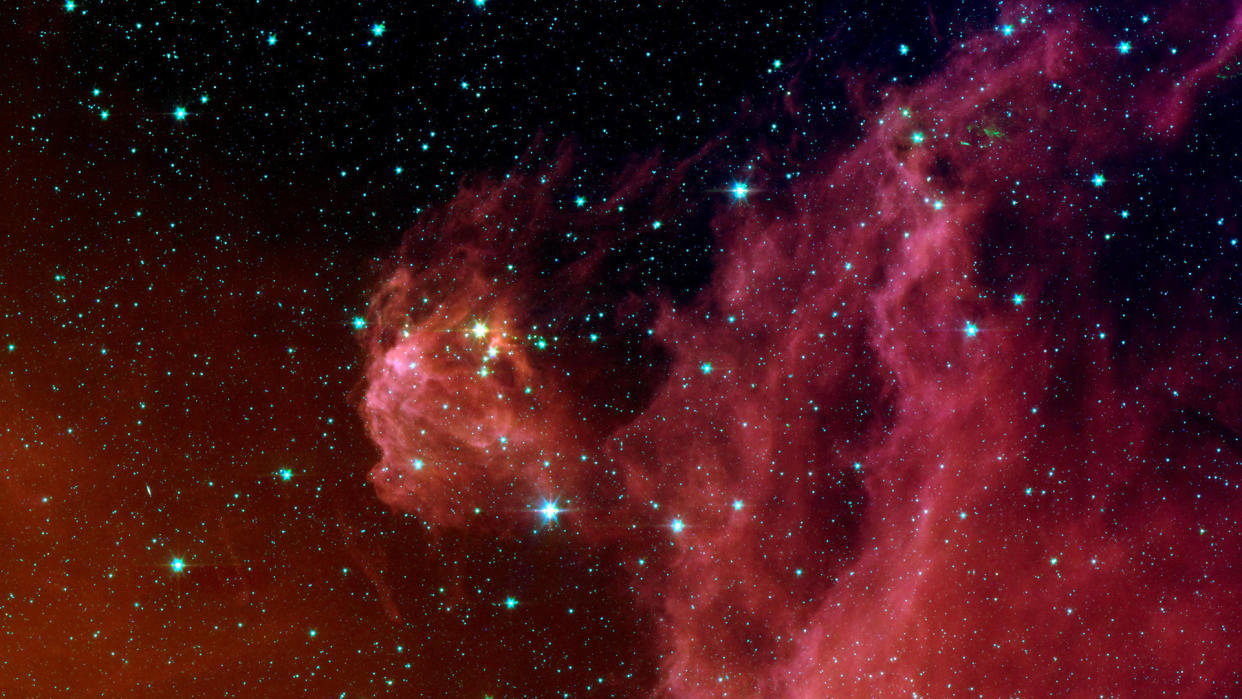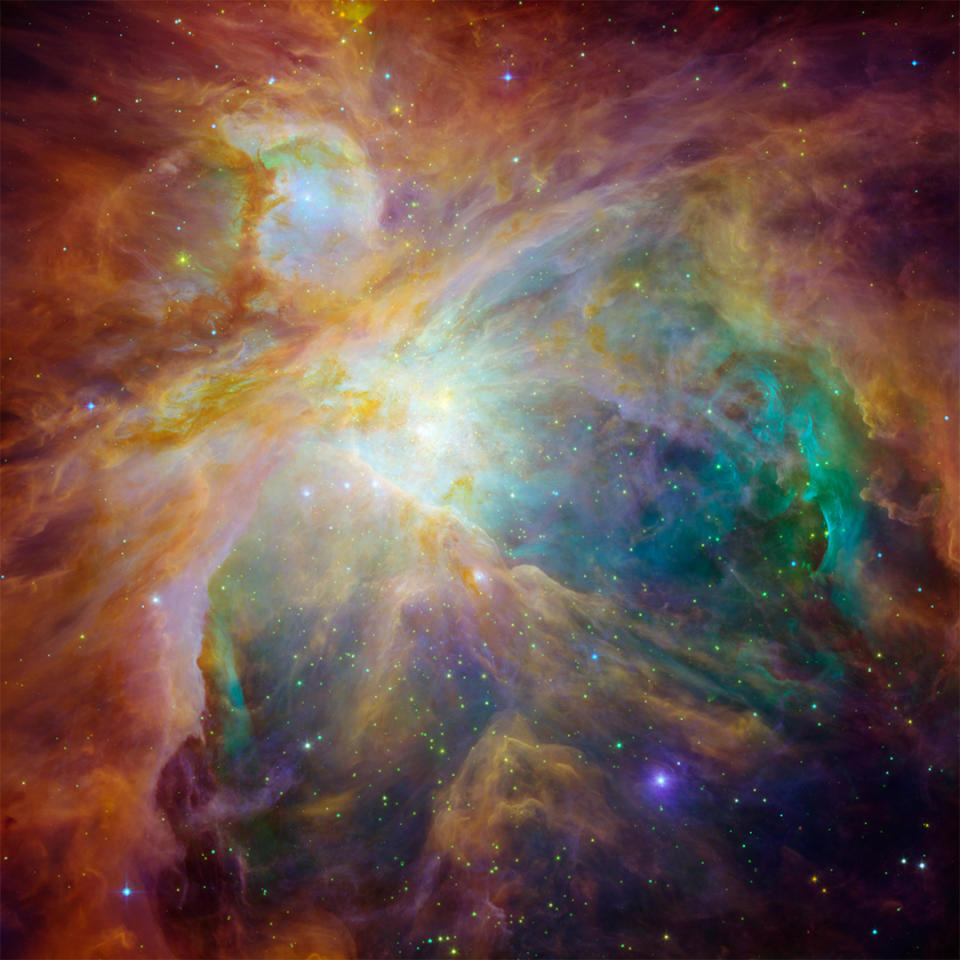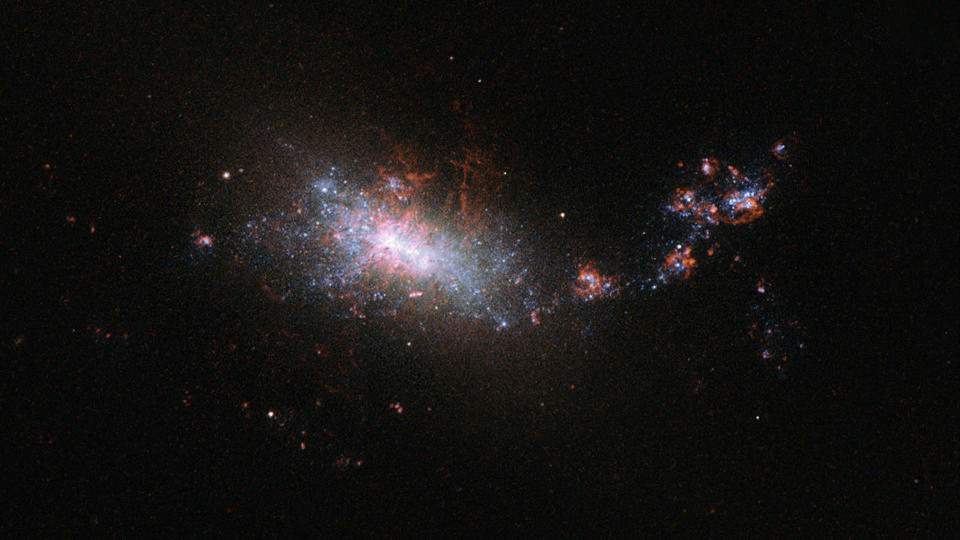Some stars may be 'infected' with black holes that destroy them from within, new study hints

A sizable portion of the universe's matter could be made of microscopic black holes from the dawn of time — and they may be devouring stars from the inside out, a new study suggests.
The research looks to solve the mystery of dark matter, an elusive entity thought to make up 85% of the universe's mass, but which does not interact with light and is effectively invisible. While the nature of this elusive dark matter remains a puzzle, there's no shortage of ideas. One intriguing suggestion is that it is made up of primordial black holes (PBHs). In a new study published in the Monthly Notices of the Royal Astronomical Society, scientists investigated the effect of PBHs when they are caught up in forming stars.
Many black holes form when massive stars die. In the aftermath of supernova explosions, matter is packed so tightly that its gravity overcomes the outward force of the blast, sometimes causing the former star's core to collapse into a black hole. During the 1960s scientists realized that black holes could also form directly from extremely compact regions of matter in the first few seconds after the Big Bang. These primordial black holes could range from the mass of a dust particle up to thousands of times the mass of our sun. While there are many unanswered questions around PBHs, scientists believe they could make up a portion of the missing mass in the universe.
The first detection of gravitational waves by the Laser Interferometer Gravitational-Wave Observatory and its counterpart, the Virgo interferometer created new possibilities for studying these primordial black holes, lead study author Nicolas Esser, a theoretical physicist at the Université Libre de Bruxelles, told Live Science in an email.
Esser and his co-authors investigated what happens when PBHs with the mass of a large asteroid interact with the giant gas clouds where stars form. They found that PBHs of this size, which pack their mass into a space no bigger than a droplet of mist, could be captured by the gravitational pull of the newly forming stars.

Some of these PBHs will have orbits that pull them directly through the forming star; each time that happens, the black hole loses a little bit of speed because of friction. After many passages through the infant star's increasingly dense interior, the microscopic black holes eventually become captured inside the star.
Stars that capture a PBH in this way do not live a normal life. The black hole starts to consume the star from within, feeding on the hydrogen that fuels it and supports nuclear fusion in the core.
It is "very likely" that a swirling cloud of gas that spirals toward the black hole, called an accretion disk, will form from the stellar material, said Esser. Whether all of that material will fall into the black hole or will cause an explosion is not yet known, but that might "lead to direct signatures of PBHs which could potentially be detected" Esser said.
The result of this cosmic cannibalism: destruction, especially among older stars with about 80% the mass of our own sun. Esser was surprised to find that the likelihood of destruction at this size was much higher than for smaller stars. This would lead to a deficit of older, larger stars in galaxies where PBHs are likely to exist. That, in turn, would help explain dark matter because "infected stars are turned into virtually invisible black holes."
Prospects for detection
The best place to look for this deficit is in ultra-faint dwarf galaxies. According to Esser, having enough stars consumed by black holes to be detected would "require a high dark matter density" and for the PBHs to move slowly through their host galaxy in order to be captured by forming stars. "Based on our observations and models, these conditions are currently only met in ultra-faint dwarf galaxies."

Observations should be able to pin down the numbers and ages of stars in these faint dwarf galaxies.
—Scientists reveal largest map of the universe's active supermassive black holes ever created
—Physicists make record-breaking 'quantum vortex' to study the mysteries of black holes
"The Hubble and James Webb Space Telescopes are both capable [of detecting] this effect. We are currently looking at the possibility that the Euclid telescope would also be able to detect it," Esser said. If the numbers of older, bigger stars are as expected, it would help scientists rule out these asteroid-mass PBHs as dark matter.
But if there aren't as many as expected, that would be exciting. "A deficit of older stars in ultra-faint dwarf galaxies would clearly be a hint that dark matter could be made of asteroid-mass PBHs," said Esser, whilst cautioning that there could be other explanations. Such a discovery could offer tantalizing evidence for PBHs, and could also help explain what some of the universe's elusive dark matter might be.
